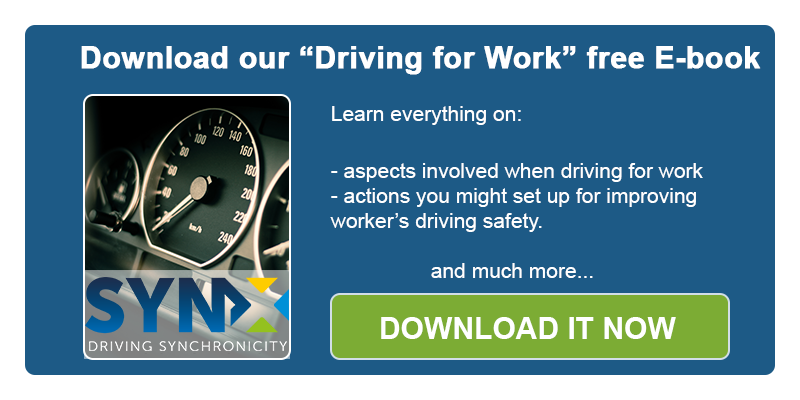
When you think of driving as a work related activity, in other words either your own vehicle or one provided by your employer is required during the course of your job, a number of factors come into play.
Road travel isn't exclusive to professional drivers, obviously there are all kinds of traffic involved, but if we concentrate on those who are driving for work, we might consider some of the factors and the participants involved in this activity: there are companies/employers, drivers/employees, and there are vehicles and journeys.
All of these play an important role in work related driving and it is very important to raise the awareness of everyone involved—highlighting the duties and the tasks of employers/employees and thinking about the vehicles, and the journeys, that are carried out.
Companies/employers
Companies and employers who manage vehicle fleets and drivers should set appropriate policies regarding driving. It might be necessary to create a driver’s handbook, perform a risk assessment and have a system in place for reporting collisions and defects.
Employers should ensure driving practices are properly understood as well. There should be company procedures for training schedules, and refreshers if needed, in order to guarantee safety and efficiency.
Drivers/employees
Employees who drive for work should have the necessary legitimacy and competence; companies should be able to evaluate these factors when hiring or assessing drivers on a regular basis.
A valid driver’s licence and relevant experience are clearly top priority, but it is certainly important to check other skills if the demands of the job are beyond those you would expect from a standard licence holder for any of the vehicles which are to be driven.
There should be work standards that have to be met by all drivers; employees should be qualified and receive adequate training, even very experienced drivers might need extra training on safety, or if they are most at risk (younger or high-mileage drivers for example).
Drivers should be familiar with a vehicle’s safety features and other safety factors, not only the obvious such as safety belts, but they should be able to check lights and tyres. Drivers should know about the risks of tiredness, how to secure loads safely, how to behave in the event of a breakdown. They should know their vehicle and its characteristics such as weight, height and so on.
The medical condition of drivers should be checked regularly, particularly eyesight. Those who are most at risk like night drivers should be scheduled for regular check-ups. Drivers should also be aware of how medications or other activities can potentially impair driving ability.
Vehicles
Vehicles should be fit for use and meet all safety standards. If they are hired, they still have to be checked; where safety is concerned, nothing should be taken for granted.
Drivers should have access to vehicle maintenance information and be able to communicate with the employer if the need arises. They should be able to make simple vehicle checks before travelling and flag any noticeable defects.
Journeys
When route planning, consider if safer routes could be used. Pay attention to the presence of bridges, tunnels or crossings; take into account possible weather conditions, in order to guarantee vehicles are fully equipped for eventualities.
Schedules and distances should be realistic and include appropriate rest breaks.



